How to create an easy terrestrial tarantula enclosure
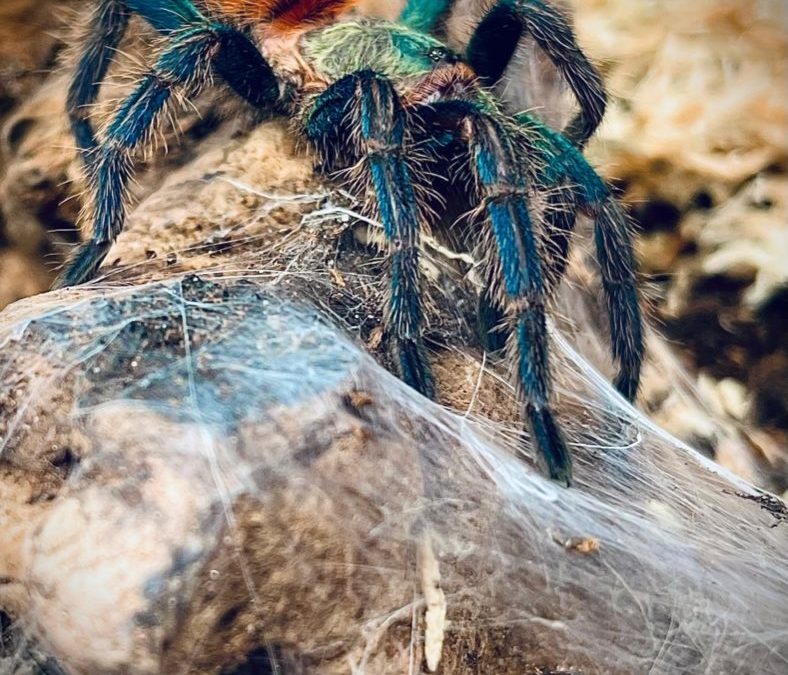

DKS: Dyskinetic Syndrome, a series of symptoms of unknown causes, including jerky, involuntary movements, and an inability to eat. This usually ends in the death of the tarantula, as there is nothing you can do to save it.
GBB: Greenbottle Blue Tarantula (Chromatopelma cyaneopubescens)
LP: Brazilian Salmon Pink Birdeater Tarantula (Lasiodora parahybana)
MF/AF: Mature/Adult Female
MM/AM: Mature/Adult Male
NW-New World: Native to the Americas
OBT: Orange Baboon Tarantula (Pterinochilus murinus)
OW-Old World: Native to anywhere else
T: Tarantula.
Death Curl: A position in which all 8 of a tarantula’s legs are curled tightly under its body. The abdomen may appear shriveled. A tarantula will assume this position if it is dehydrated, or dead or dying.
Hooked Out: Referring to the hooks on a mature male tarantula’s pedipalps used for mating.
Hot: Highly venomous.
Invert: Invertebrate, any animal lacking a backbone.
Molt: The shedding of an arthropod’s exoskeleton so that a new, larger one can take its place. Molting is the most vulnerable time in a tarantula’s life.
Molt Mat: A layer of silk that tarantulas put down to protect themselves during molting.
Premolt: The period of time when a tarantula stops eating and becomes sluggish in preparation for a molt. A tarantula may be in premolt from a few days to months.
Scorpling: Baby scorpion.
Sling: Spiderling, baby spider.
Stress Curl: A position in which a tarantula curls up, hiding its body with its knees. This is a sign that your tarantula is probably stressed.
Stridulation: When a tarantula rubs its fangs together to make a hissing noise in an attempt to scare off a threat.
Tagged: Bitten.
Threat Pose: When a tarantula raises its front legs and shows its fangs in an effort to scare off a perceived threat.
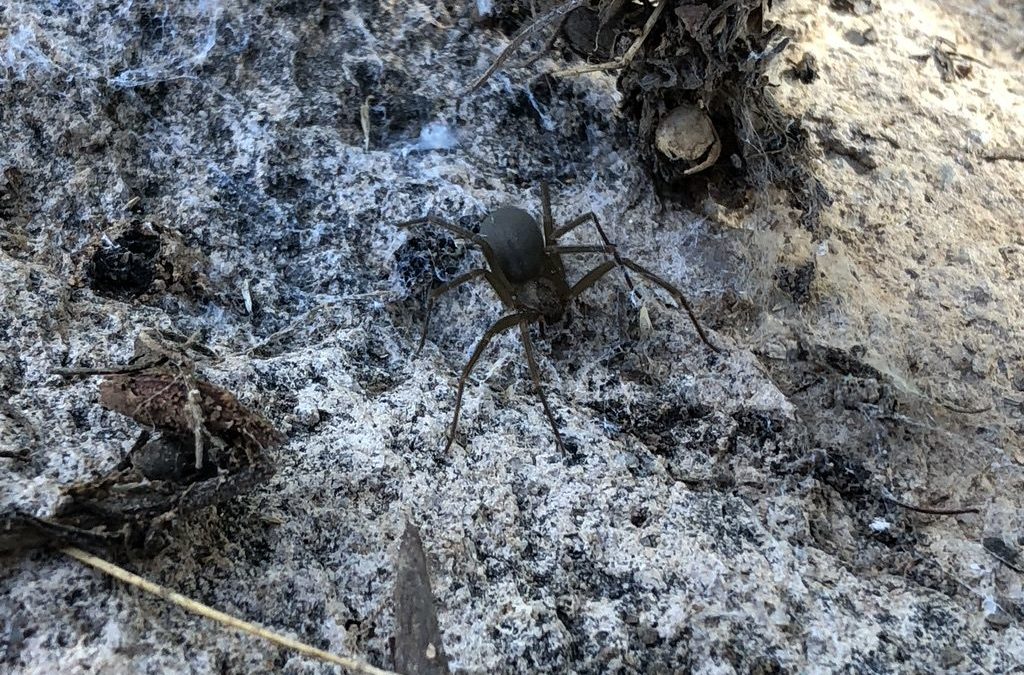
One of the most infamous spiders in the U.S. is the Brown Recluse Spider (Loxosceles reclusa). Also known as the Violin Spider for the patterns on the cephalothorax, these arachnids possess strong venom, and bites are very painful. The venom sometimes even causes the skin around the bite to rot.

A Brown Recluse Spider (Loxosceles reclusa).
There are many spiders that look similar to the Brown Recluse, causing harmless spiders to be confused with the recluse. One such spider is the Brown Spitting Spider (Scytodes fusca). These small, harmless, slow moving spiders are brown in color and share the same natural range as the recluse, but they can be identified by their trademark large, dome-shaped cephalothorax.

A Brown Spitting Spider (Scytodes fusca) with egg sac. Notice the dome-shaped abdomen and the 3 sets of 2 eyes.
Another similar spider is the Wolf Spider (Lycosidae sp.). There are many species of Wolf Spider, most being a brownish color. They are very fast and some can get quite large. Their bites are mildly painful, about that of a bee sting, but they are not aggressive and are usually docile. The best way to identify a Wolf Spider is to look for the large front facing pair of eyes.
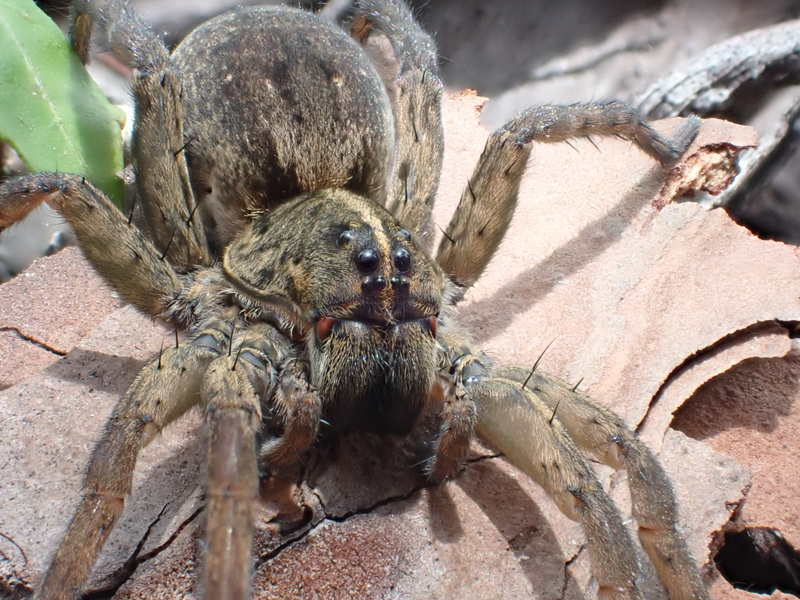
A large adult female Wolf Spider (Tigrosa cf. helluo). Note the large front facing eyes.
There are many, many brown colored spiders out there, but it isn’t possible for me to name all of them here. Those listed are just a couple of the most commonly mistaken for Brown Recluses. Remember: Just because its a brown spider doesn’t mean that its a Brown Recluse! If you find a spider that you would like identified, just send a few good pictures of it to me at andrew@bugzrule.com and I will get back to you as soon as I can!
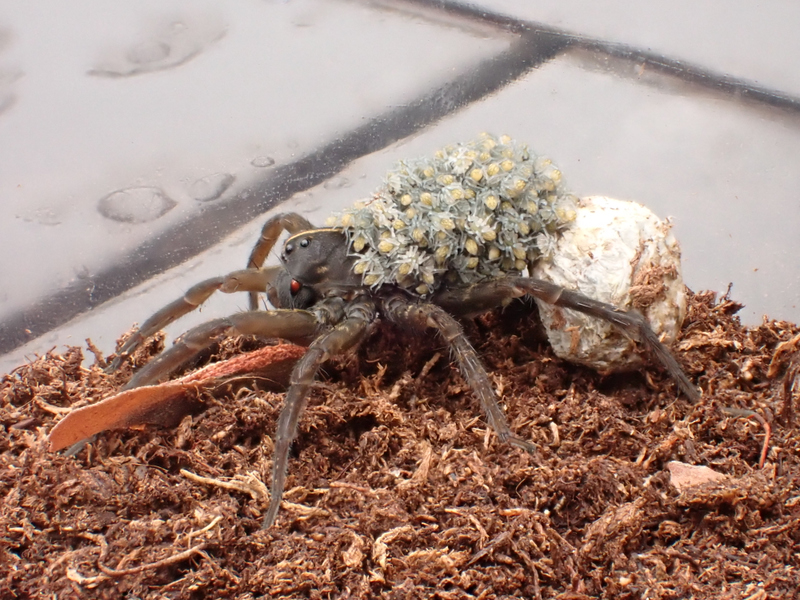
Did you know that Wolf Spiders are excellent mothers? When a female Wolf Spider is ready to lay eggs, she weaves a sheet of silk to lay them on. Then, she lays a hundred or more tiny little eggs on the silk mat. After the eggs are laid, the spider then weaves a sac of silk around them. She attaches this egg sac to her abdomen and carries it around for a couple of weeks until the eggs hatch.
Wolf Spider with newly hatched spiderlings. Note that the egg sac is still attached, as there are still some spiders that have not yet emerged.
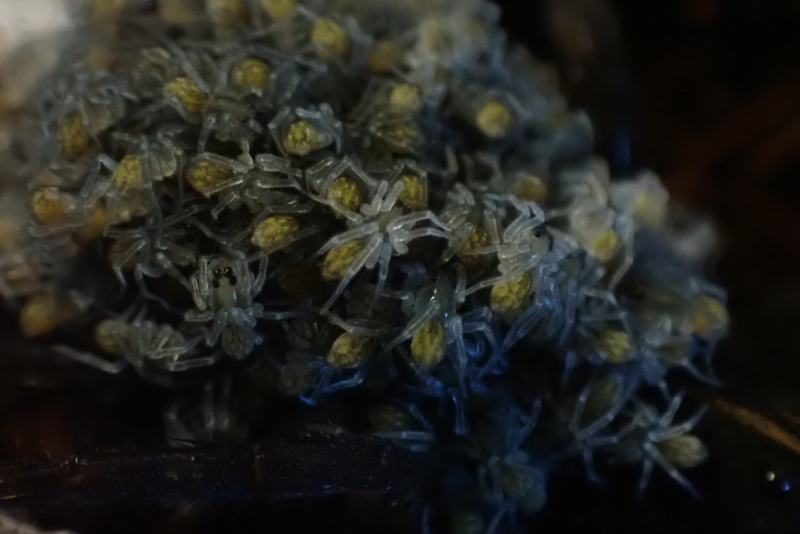
A close up of some of the newborn spiderlings.
When the eggs begin to hatch inside the egg sac, the mother rips a small hole in the sac to allow the spiderlings, or baby spiders, to climb up onto the mother’s back, where they will stay for the next few weeks. Once they are fully developed and ready to fend for themselves, the spiderlings will climb off the mother’s back and skitter away into the undergrowth, fully capable of catching food and defending themselves.
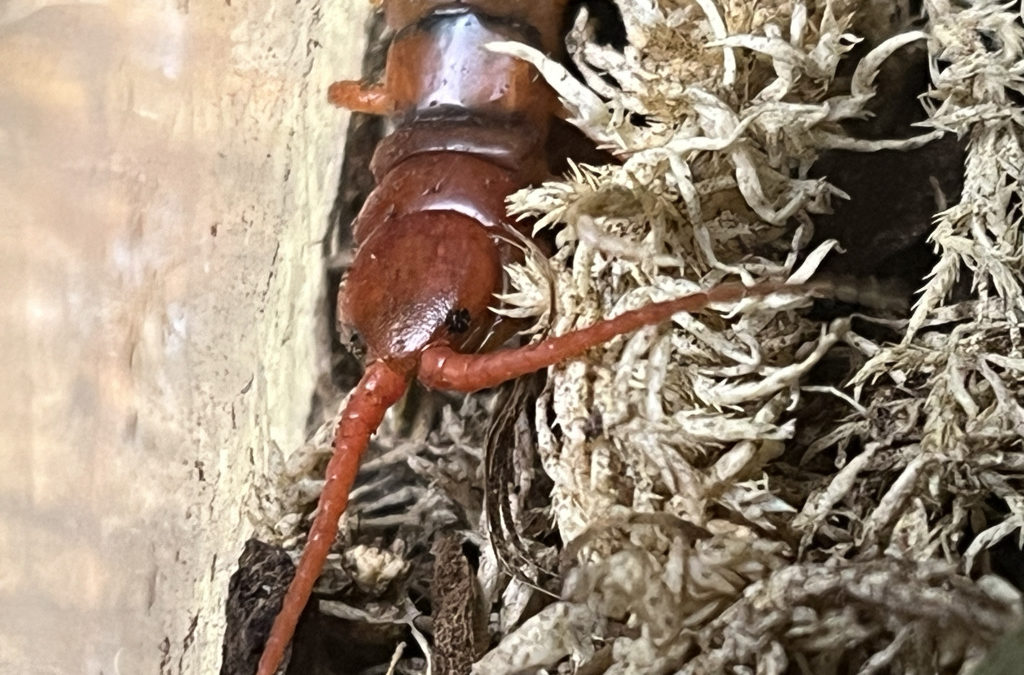
Giant Centipedes are some of the largest terrestrial invertebrates on the planet. Some can even grow to a length of 12 inches! The word centipede means 100 legs, but no centipede has that many. Instead, most have around 42 legs with 1 pair per each body segment. A centipedes first pair of legs are modified into sharp, venom injecting fangs called toxicognaths (yes, I love saying that word). These fangs are used to catch prey and defend themselves from predators. The venom, although not lethal to humans in most cases, is very strong and is quite painful.
I have been bitten before and it was quite frankly one of the worst experiences of my life. It was my fault though, as I was being careless while handling it, and I accidentally pinched one of its legs. It reacted lightning fast and got me between the fingers. The pain was like burning needles, and lasted for 3 days. I absolutely do not recommend trying to handle a Giant Centipede. They won’t bite if you don’t agitate them, but they are extremely easy to set off, and they are very quick. Giant centipedes are expert predators, and are able to take down extremely large prey items such as mice, birds, and small snakes. Some even hang from the ceilings of caves in order to snatch bats out of the air! Once the centipede has grabbed a potential meal, it wraps its muscular body around the victim to keep it from escaping, and then proceeds to dig in while the prey item is still alive. Giant Centipedes have a relatively long lifespan, being able to live up to 10 years in captivity. There are over 3,000 species of centipede in the world, but only a handful are large enough to be classified as “Giant Centipedes”.
These mostly consist of the animals in the genus Scolopendra. The most well known of these is Scolopendra subspinipes, the Vietnamese Giant Centipede. These massive invertebrates can grow up to 12 inches in length and can live for over a decade. The largest species in the world is Scolopendra gigantea, the Amazonian Giant centipede, and can reach an incredible length of up to 12 inches. Although these amazing creatures are often seen as nightmare fuel, I think they are absolutely incredible, and a fantastic part of creation!
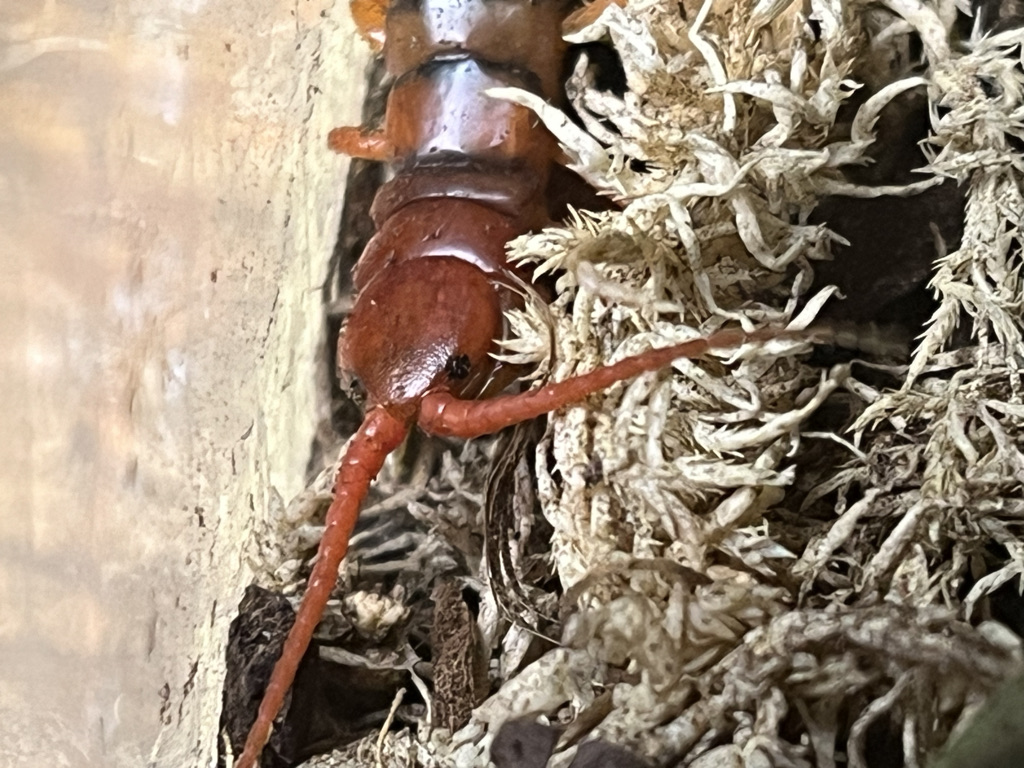

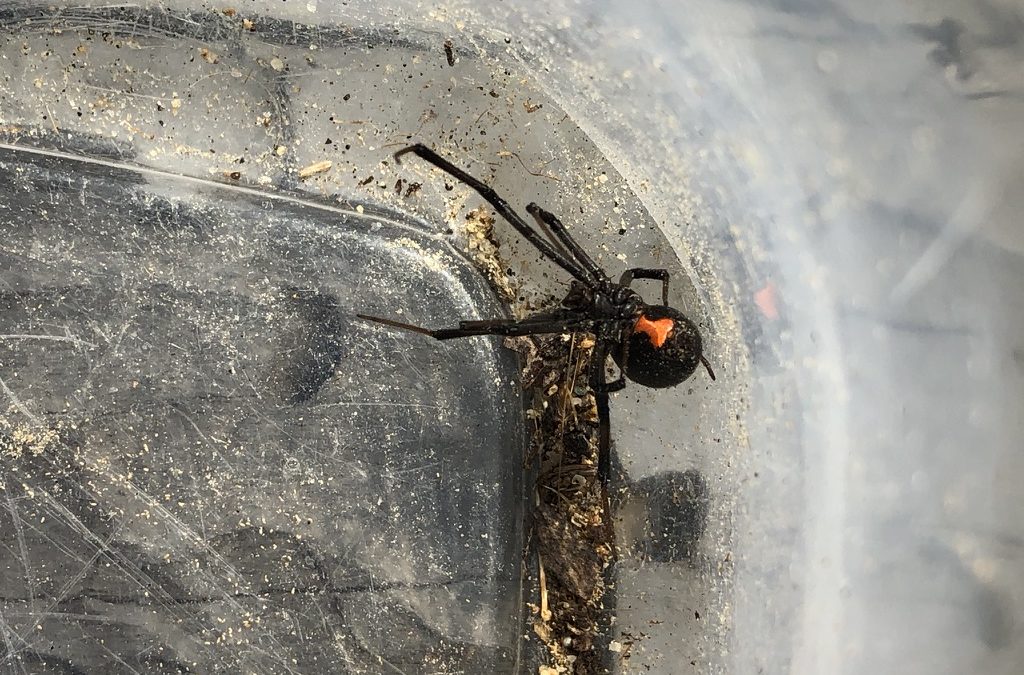
Chuck and Anita Kristensen live on a pharm. Literally. These two arachnologists have dedicated their lives to keeping and caring for 75,000 spiders, scorpions, and centipedes to milk them for their venom. These creatures include the most venomous arachnids in North America: Black Widow Spiders (Latrodectus mactans) and Arizona Bark Scorpions (Centruroides sculpturatus).
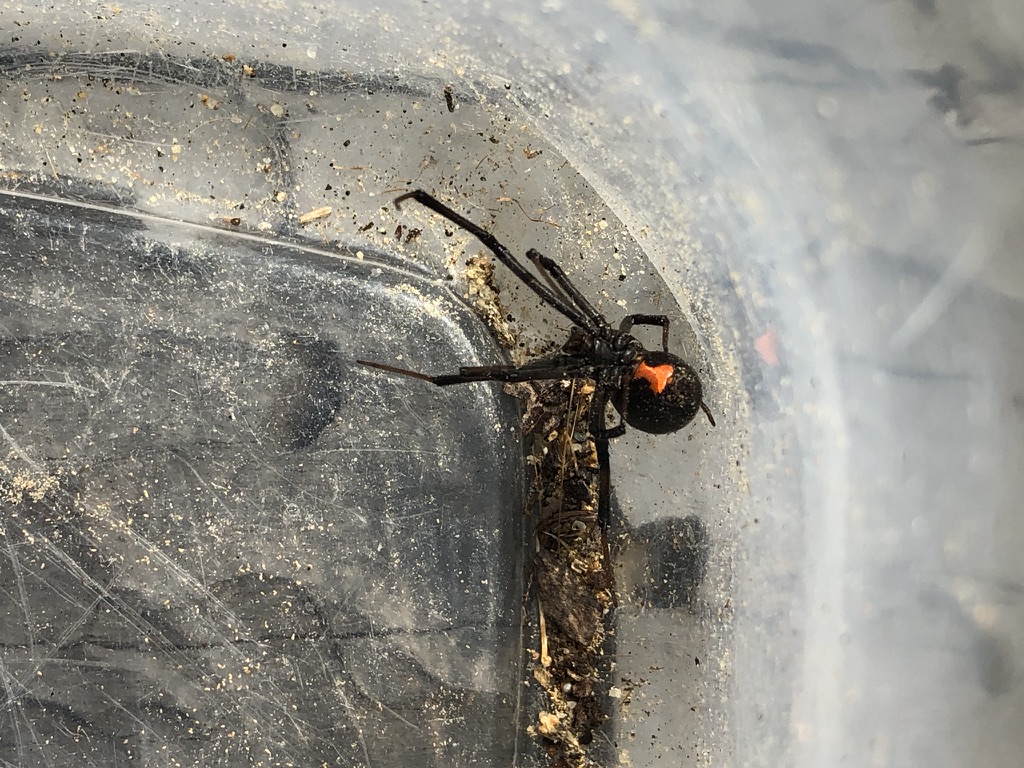
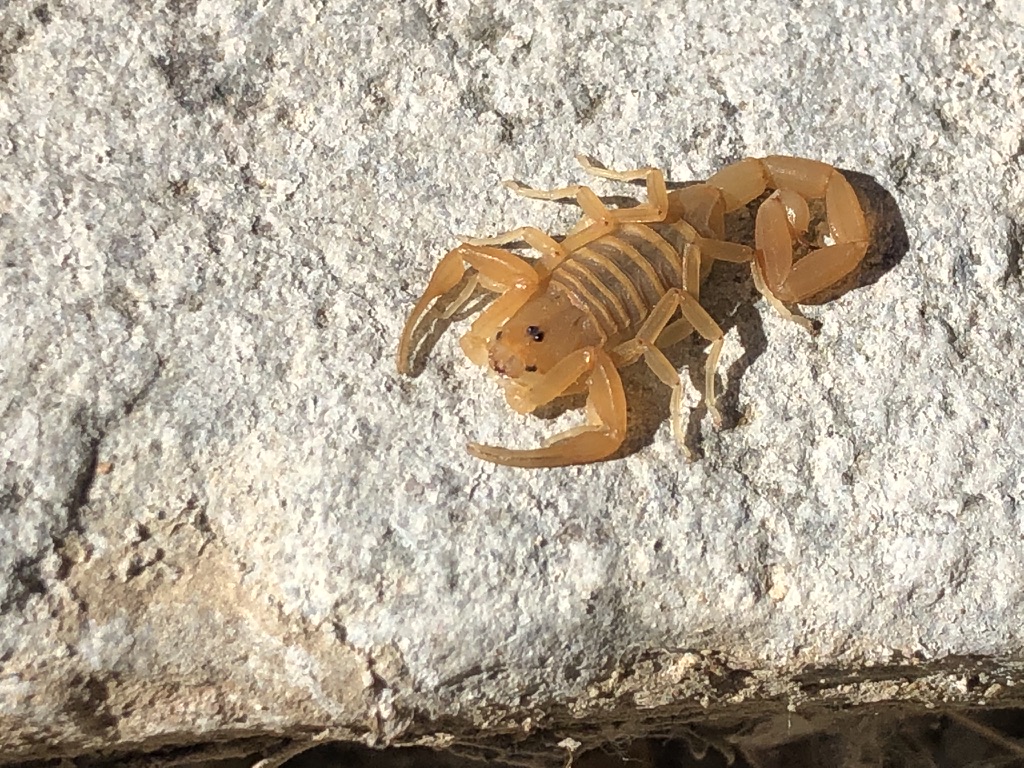
A Southern Black Widow Spider (Latrodectus Mactans) An Arizona Bark Scorpion (Centruroides sculptratus)
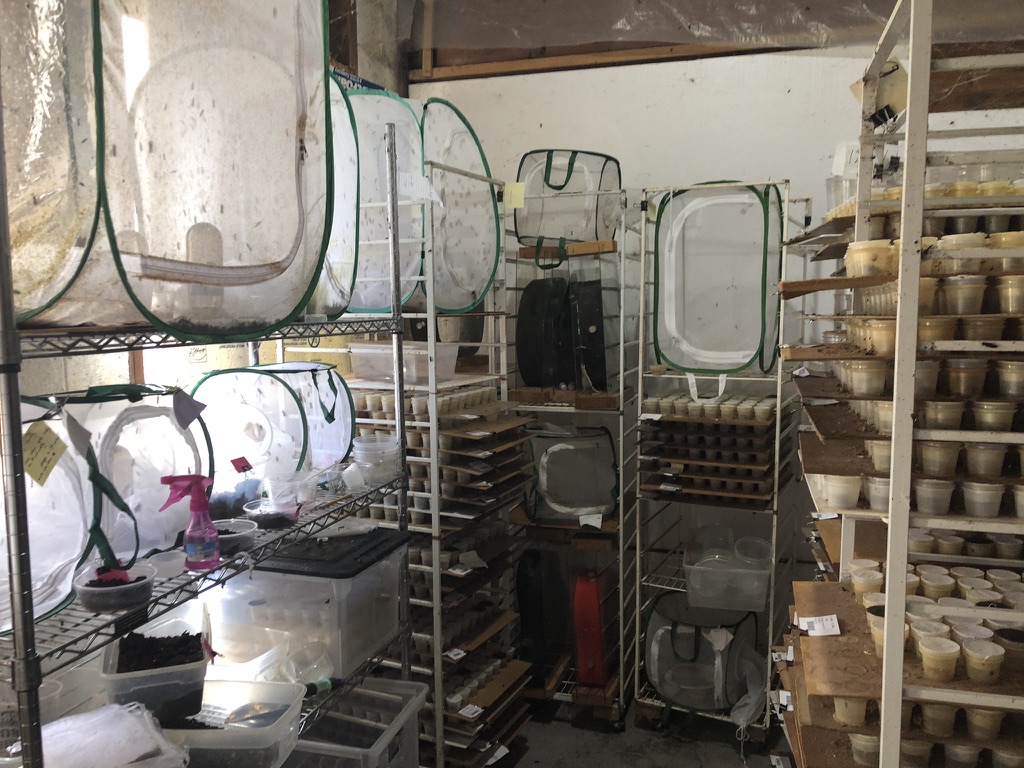
Just a tiny portion of the Spider Pharm. Each one of those tiny plastic cups holds an adult female Black Widow Spider, while the netting containers hold thousands of feeder flies.
But why get the venom? The reason is for scientific and medical purposes. The venom of a spider or scorpion, such as a Black Widow Spider, can be modified to reverse the effects of the venom of the same species, creating an antivenom. Antivenoms are a hugely important discovery, because now if you are bitten by certain deadly venomous animals, you can receive this life saving solution at a hospital, instead of potentially dying. One example of this is the Sydney Funnelweb Spider (Atrax robustus). People in Australia used to die from bites from this highly venomous spider. But since the introduction of an antivenom for this species in 1981, there have been no deaths, even though 30-40 people are bitten by this spider every year. Pretty incredible, huh?
But how is the venom extracted from the spiders safely? First, the spiders are knocked out with carbon dioxide. Then, it is picked up with tweezers and given an electric shock, which stimulates the spider to release a tiny droplet of venom, which is collected and put into a vial, which then goes in a special cooler. This process has to be repeated 50,000 to 100,000 times to produce a single gram of venom! Wow! You would have to have pretty steady fingers and a whole lot of nerve to do what this couple does!
Learn more at the Spider Pharm website: www.spiderpharm.com
Recent Comments